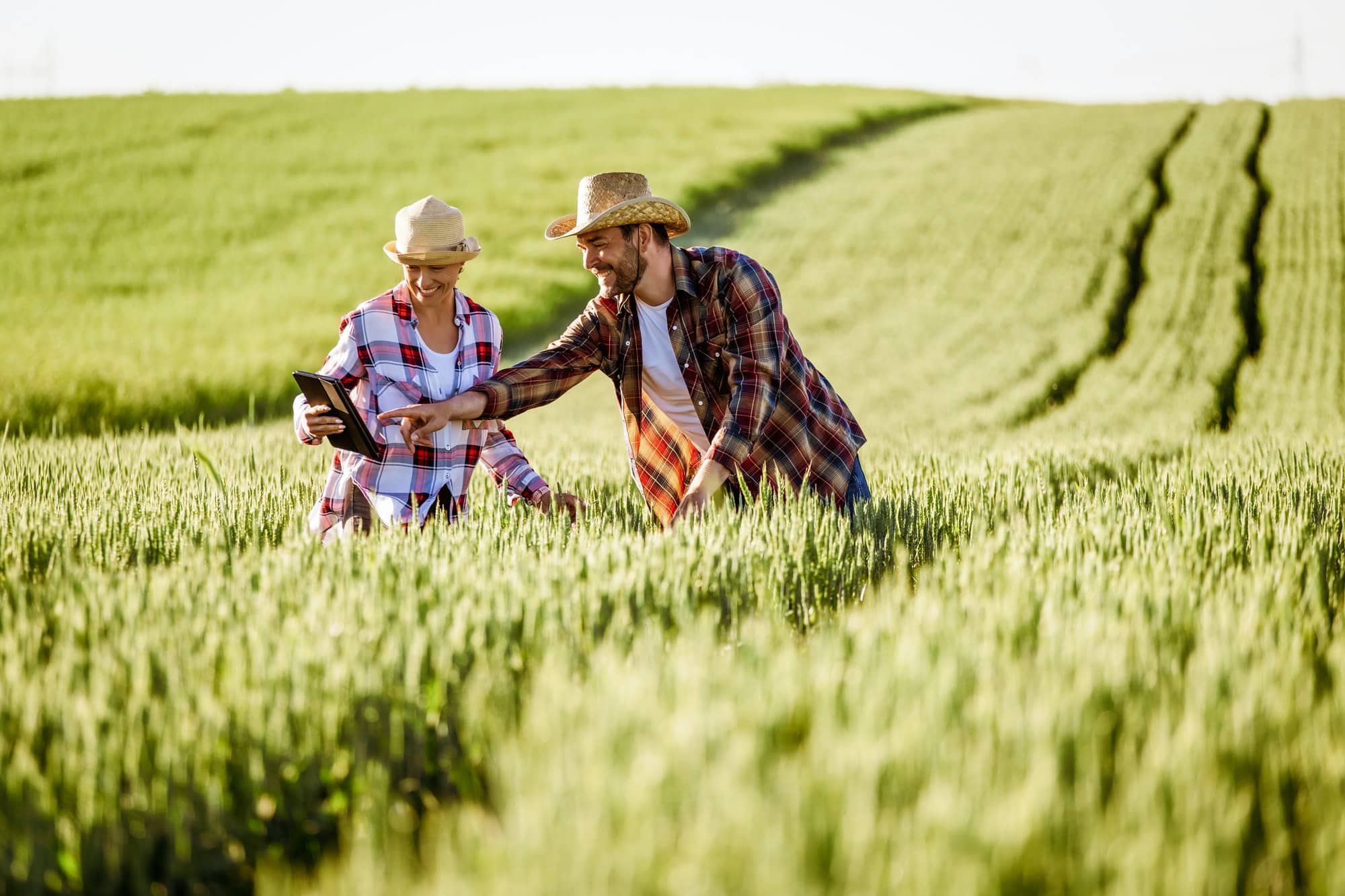Agriculture is the backbone of human survival – from the time our ancestors first started to cultivate crops, it has played an irreplaceable role in sustaining civilizations. But agriculture is not untouched by transformation. Over centuries, methods of farming have evolved, and today, we are witness to yet another revolution – the advent of precision agriculture. This method leverages data analytics, IoT solutions, and artificial intelligence (AI) to improve yield and optimize resource usage. One integral aspect of precision farming is soil and crop analysis, which is being revolutionized by AI technologies.
AI in Precision Agriculture: An Overview
The concept of precision agriculture has been around for quite some time. The idea is simple – instead of treating an entire field uniformly, farmers break it down into smaller sections and manage each one according to its specific needs. This approach is both efficient and environmentally friendly.
Cela peut vous intéresser : How Are Virtual Reality Simulators Training UK Surgeons in Minimally Invasive Procedures?
AI is playing an increasingly crucial role in precision farming. By interpreting data collected from various sources such as weather stations, satellite images, and sensors placed in fields, AI can provide farmers with actionable insights that can significantly improve their yields and reduce the environmental impact of their operations.
The Impact of AI on Soil Analysis
Soil analysis is an essential aspect of precision farming. It involves assessing the soil composition to understand its nutrient content, pH level, and other properties. Traditionally, this process has been time-consuming and labor-intensive, requiring farmers to collect soil samples manually and send them to a lab for testing.
A voir aussi : What’s the Potential of Blockchain for Intellectual Property Management in the UK?
However, AI technologies are changing this. Using IoT devices and sensors placed in the field, farmers can now collect real-time data about their soil’s health. This data is then analyzed by AI algorithms to provide insights about the soil’s state and advice on how it can be improved. For instance, if the AI detects that the soil lacks a certain nutrient, it can recommend the right type of fertilizer to use.
By making soil analysis quicker and more accurate, AI is helping farmers make better decisions about their crop management practices, leading to increased yields and better quality produce.
AI in Crop Analysis and Management
Just as it has revolutionized soil analysis, AI is also transforming how farmers manage their crops. With the help of AI-powered tools, farmers can monitor their crops in real-time, identifying potential issues before they become major problems.
One of the key areas where AI can make a difference is in disease detection. Using image recognition algorithms, AI can analyze pictures of crops taken by drones or other devices to identify signs of disease or pest infestation. Once an issue is detected, the AI system can alert the farmer and suggest potential solutions.
AI can also help with irrigation management. Using data from weather forecasts and soil sensors, AI can predict when and how much water each section of a field needs. This allows farmers to irrigate their crops more efficiently, reducing water waste and ensuring that crops get the right amount of water at the right time.
The Market for AI in Precision Farming
As farmers worldwide are increasingly turning to precision farming techniques to improve their yields and sustainability, the market for AI in precision farming is set to grow.
According to a report by Markets and Markets, the global AI in agriculture market size is expected to grow from USD 1.0 billion in 2020 to USD 4.0 billion by 2026, at a Compound Annual Growth Rate (CAGR) of 25.5% during the forecast period. This growth is driven by factors such as the increasing food demand due to population growth, the rising use of data management technologies, a shortage of skilled labor, and the growing emphasis on sustainable farming practices.
The same report identified North America as the largest market for AI in agriculture, thanks to the widespread adoption of advanced technologies in the region. However, Asia Pacific is expected to grow at the highest CAGR during the forecast period, attributed to its large agricultural industry and increasing adoption of smart farming practices.
The Environmental Impact of AI in Precision Farming
Finally, it’s worth discussing the environmental impact of AI in precision farming. As we all know, traditional farming practices have had a significant environmental impact, contributing to deforestation, water pollution, and greenhouse gas emissions.
By enabling precision farming techniques, AI can help to mitigate these issues. For instance, by optimizing irrigation, AI can help reduce water usage in agriculture, which is currently responsible for about 70% of global freshwater withdrawals.
Moreover, by helping farmers to apply the right amount of fertilizers and pesticides at the right time, AI can minimize the runoff of these chemicals into nearby water bodies, reducing water pollution. And by increasing crop yields, AI can also help to reduce the amount of land needed for farming, thereby preserving natural habitats and biodiversity.
In conclusion, AI is not just transforming agriculture – it’s making it more sustainable. And in a world where both food security and environmental sustainability are pressing concerns, that’s a development we can all get behind.
The Role of Machine Learning in Intelligence Agriculture
Just like artificial intelligence, machine learning, a subset of AI, is making a significant impact on precision agriculture. It’s enhancing the decision-making process, enabling farmers to make more informed decisions based on real-time data.
Machine learning excels in recognizing patterns from large amounts of data. In the context of precision agriculture, machine learning can analyze data from various sources, such as soil sensors, drone images, and weather forecasts, to predict crop yields, detect diseases or pests, and optimize irrigation schedules.
For instance, machine learning algorithms can analyze historical and real-time data on crop health, soil moisture, and weather conditions to predict crop yield with remarkable accuracy. This predictive analytics capability can help farmers plan their harvest more efficiently and effectively, reducing waste and improving profitability.
Further, machine learning can also assist in the early detection of diseases and pests. By training on thousands of images of healthy and diseased crops, machine learning models can recognize the early signs of disease or pest infestation from drone or satellite images. This can enable timely interventions, thus minimizing crop losses and reducing the use of harmful pesticides.
Overall, machine learning is enabling data-driven farming practices, leading to increased productivity, reduced environmental impact, and greater profitability.
Computer Vision in Precision Farming
Another AI technology making a significant impact on precision farming is computer vision. It is the AI’s ability to interpret and understand visual data, enabling it to perform tasks that require visual input.
In the context of precision farming, computer vision is used extensively for crop monitoring. By analyzing images taken by drones or satellites, computer vision can assess crop health, detect diseases or pests, and estimate crop yields.
The technology can also be used to monitor soil conditions. Using images captured by drones or satellites, computer vision can identify areas of the field that are too dry, too wet, or deficient in certain nutrients. It can also detect changes in soil color, which could indicate the presence of certain diseases or pests.
By providing detailed, real-time information about the state of crops and soil, computer vision is enabling farmers to take quick, informed decisions to maximize their yields and minimize their environmental impact.
Conclusion: The Future of Precision Farming with AI
While artificial intelligence, machine learning, and computer vision are already revolutionizing precision farming, their full potential has yet to be realized. As these technologies continue to advance and become more accessible, we can expect them to play an increasingly integral role in precision farming.
The future of precision farming with AI is likely to see more predictive and proactive farm management. AI systems will not only detect problems but also predict them before they occur, allowing farmers to take preventive measures. This will lead to even greater efficiency and productivity in farming practices.
Moreover, as AI becomes more sophisticated, it could also help address some of the most pressing challenges in agriculture, such as adapting to climate change, preserving biodiversity, and ensuring food security for a growing global population.
In this context, big data will play a crucial role. As more and more data is collected from various sources, AI systems will become more accurate and reliable, enabling even more precise and efficient farming practices.
In the end, the combination of AI and precision farming could lead to a new green revolution, one that not only boosts agricultural productivity but also contributes to environmental sustainability. This transformation is not just a boon for the farming community but for the entire planet and its future generations.











